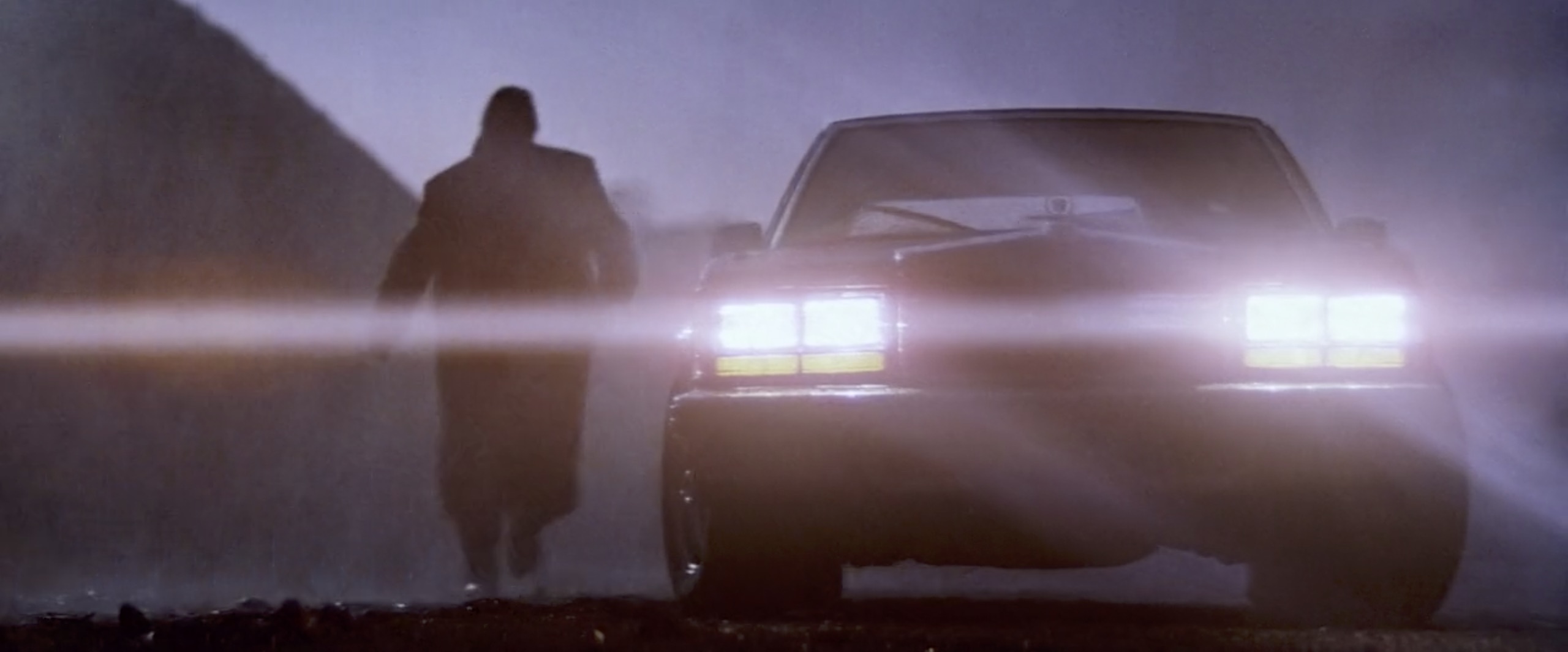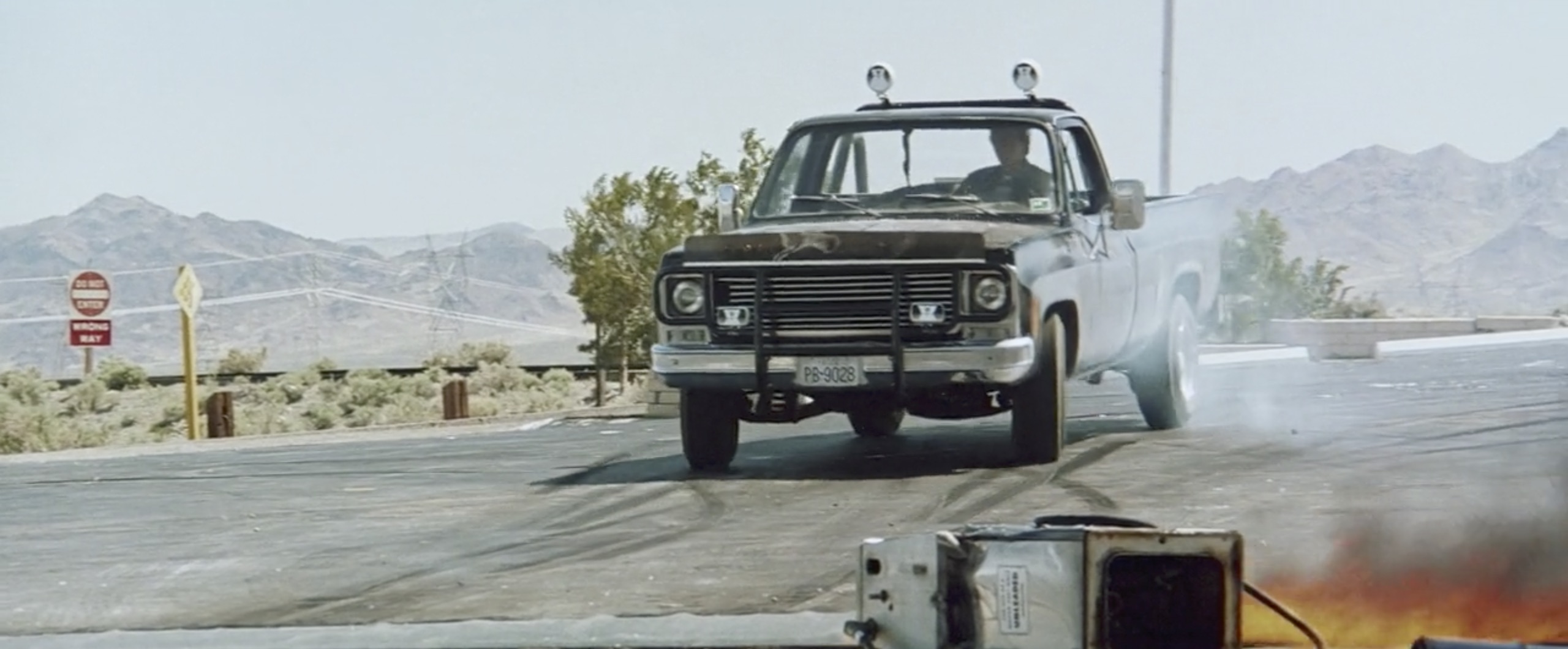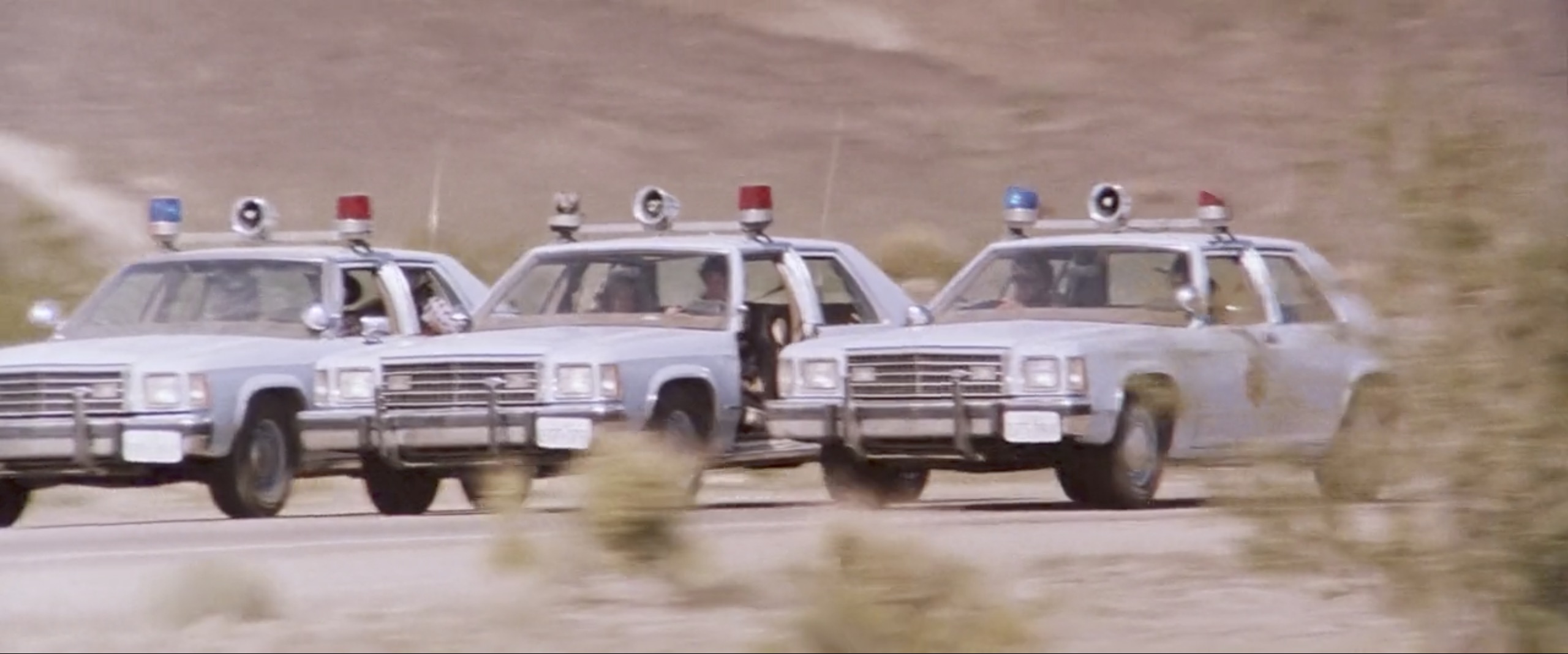Media | Articles
The Hitcher plays on our deepest fears of the American road
A match is struck. Jim Halsey lights his cigarette in the driver’s seat of a red Cadillac. The road is dark, somewhere in the middle of nowhere. Jim starts to nod off—that is, until he pulls over and opens his door for a hitchhiker seemingly stranded in the rain. “My mother told me never to do this,” Jim laughs. The nightmare is just beginning. From this first scene Robert Harmon’s The Hitcher ushers into a dream-like, liminal world, unmoored from reality, from time and place. A world where there are no rules and no order, only violence.
The Hitcher’s hero Jim Halsey (C. Thomas Howell) begins the film as an innocent. He’s been paid to drive a 1977 Cadillac Seville from Illinois to California and has the misfortune of meeting homicidal hitchhiker John Ryder (Rutger Hauer) somewhere in Texas. There’s no apparent rhyme or reason why Ryder kills so many and allows Jim to live just to torment him. Jim wants to know why Ryder is doing this to him. Ryder responds, “You’re a smart kid. Figure it out.”
When it first premiered in 1986, The Hitcher was considered to be vicious, indefensible, exploitative, gruesome. But the filmmakers felt that their movie was misinterpreted, meant to be more Hitchcock than Cronenberg. It’s an allegory, an American story, with The Night of the Hunter, Detour, Psycho, and Ida Lupino’s The Hitch-Hiker in its DNA. It was inspired in part by The Doors song “Riders on the Storm,” and, of course, Spielberg’s Duel. In lieu of a demonic truck, The Hitcher’s antagonist is a serial killer; he’s a cipher, a sadist with unknowable motives, more supernatural force than man. When screenwriter Eric Red cold-called producers about his script, he told them, “When you read it, you will not sleep for a week. When the movie is made, the country will not sleep for a week.”
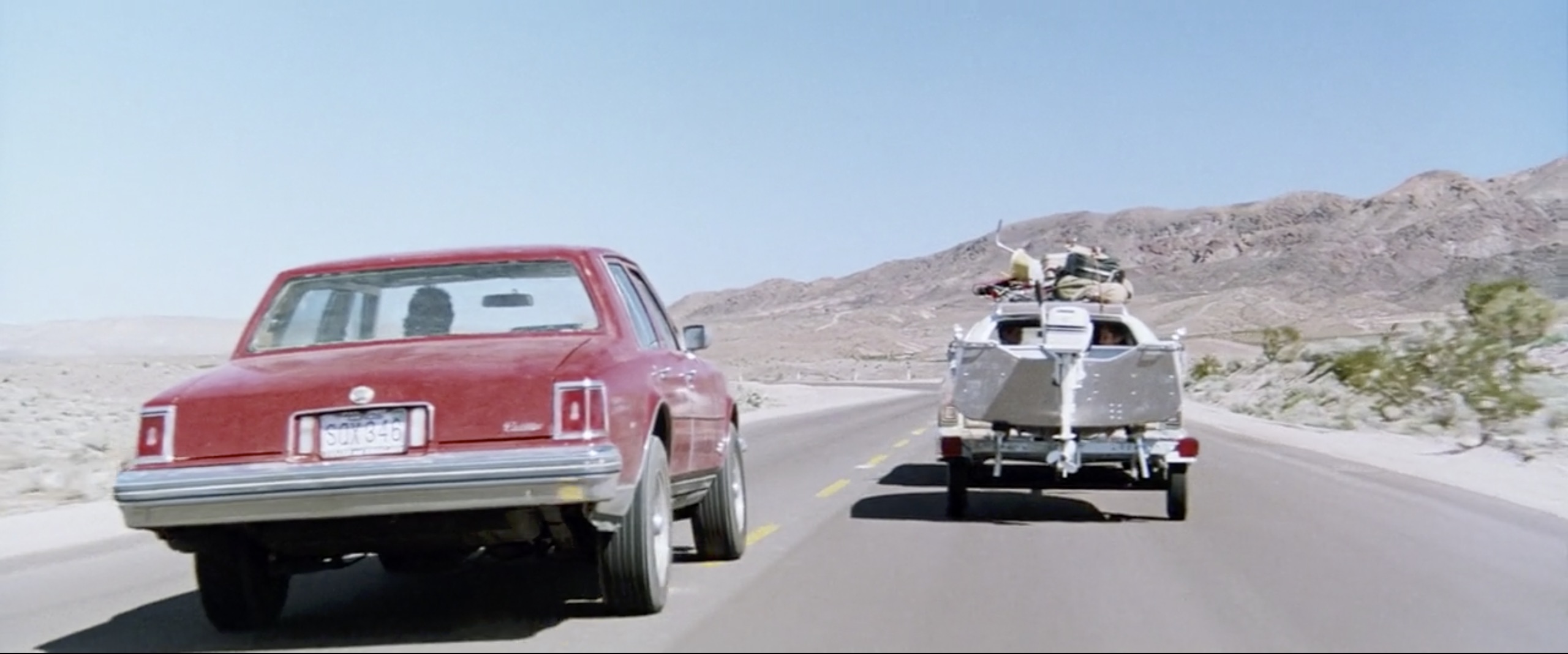

Marketplace
Buy and sell classics with confidence

The Hitcher is a noir-tinged western, a horror film, a psychological thriller, a coming-of-age tale. It’s also one hell of a road movie. A product of myth, urban legend, and true crime (for example spree killer Billy Cook, who inspired The Hitch-hiker), The Hitcher taps into our deepest fears, reflecting the growing dangerousness of an American pastime: hitchhiking. The Hitcher is a sadistic game of cat and mouse between Jim and John Ryder that plays out on open roads, in abandoned gas stations and empty diners. Ryder psychologically tortures Jim several ways: by telling him stories about what he’s done to other denizens of the road, by trying to provoke him into suicide, framing him for Ryder’s murders, even leaving a severed finger in his french fries.
At one point, Ryder plows through a garage in a stolen pickup truck and tries to hit Jim. When that fails, he sets the gas station—and Jim’s Cadillac—on fire. It only gets worse from there. We never see Ryder’s victims meeting their fates, only their cars left at the side of the road, or with Ryder in the driver’s seat: a VW Bug, a vacationing family’s Ford LTD Country Squire with a bald eagle on its rear window, a 1979 Chevrolet C-20 Custom Deluxe Fleetside with a bumper sticker that reads “America,” each vehicle representing some facet of American culture.
Jim tries to report Ryder to the cops, but it only leads them to believe Jim himself is the killer they seek. It doesn’t help that Ryder takes Jim’s identification and plants a bloody knife on him. They arrest Jim, but Ryder kills every cop at the sheriff’s station and frees Jim from jail. Jim flees. As more cops close in on him, the film’s only traditional car chase begins. They find Jim on a bus, on the run. He drops his gun and surrenders, but one of the cops is determined to shoot him dead, believing Jim’s a cop killer. Diner waitress Nash (Jennifer Jason Leigh) picks up the gun and comes to his defense. The pair commandeer a cop car, and two more cop cars set off in pursuit, a fleet of three 1982 Ford LTD-Ss.

The chase feels like an old west gunfight, only the dynamic has flipped: the outlaw is innocent, and the law itself cannot be trusted, as Jim is hounded by an unrelenting police force that has no real evidence against him. (The cops even admit to each other: “That kid ain’t a killer, any fool can see that.”) Nash tries to explain over the radio that they want to give themselves up, but the cops continue to chase Jim and Nash and shoot at the stolen LTD, blowing off the side mirror and driver’s side door. The cops flank the car and open fire. Jim hits the brakes, and the police don’t notice until it’s too late—they shoot each other instead, flip, and crash.
Robert Harmon described the way they shot the chase: an insert car with a camera affixed to a crane arm followed the cop cars closely, letting the camera hang just a few inches above the ground. When Jim slams on the brakes, they pulled the camera up and over the car. The Hitcher was shot by Australian cinematographer John Seale, most famous for his work on Mad Max: Fury Road, The Firm, Rain Man, Witness, and The English Patient (which earned him an Oscar). Harmon said they shot in a widescreen format, in true anamorphic, filming panoramic shots of Southern California desert where the movie was made. “So much of the film is about, you might say, figures in a landscape,” said Robert Harmon. Seale also favors these wide shots during the chase, giving the pursuit a sense of scope (and perhaps futility), but he also opts for closeups, low angles, and very few cuts, as if he’d already been taking lessons from George Miller’s Mad Max films. These low-angled shots produce a visceral effect: we skim the road and rush toward and away from the cars that speed down it.
After the cops crash, a helicopter materializes in the sky over Jim and Nash, and a faceless policeman inside it opens fire. John Ryder arrives, driving down a parallel road in a car ‘borrowed’ from one of his victims. He shoots down the helicopter, and more cop cars crash into the burning helicopter. If Nash had any doubts about Jim’s innocence before, her first glimpse of Ryder laid them to rest. Jim and Nash are safe—for now—but their respite is brief. The Hitcher operates on nightmare logic: Jim hurtles toward an inexorable fate, incapable of freeing himself from the grip of his unstoppable adversary.
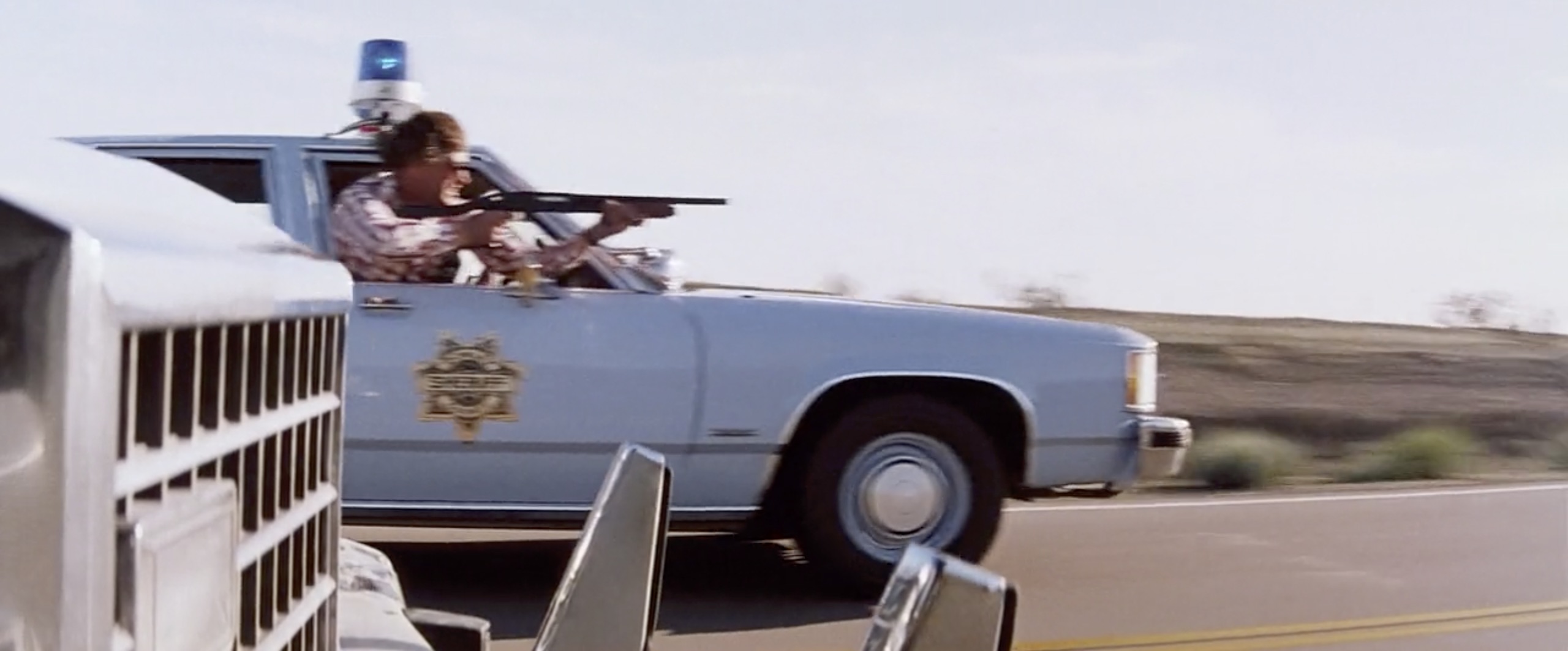



Roger Ebert felt that The Hitcher was sadistic and nihilistic, and he gave it zero stars. Order gives way to lawlessness, the line between outlaw and good guy is blurred, the hero can’t save the damsel in distress. John Ryder ultimately initiates Jim Halsey into a world of male violence. Script development executive David Bombyk had a slightly more optimistic read on the film, though, and explained that The Hitcher “represented an American fable.”
Bombyk told the LA Times: “Eric [Red] chose these brilliant mythic elements to have this boy traveling across Texas, the great American frontier, and having the hitchhiker emerge out of the landscape—he’s a primal element with no context and you can’t explain him. What does he mean? Why is he doing this?
In reality, there’s a universe out there that contains danger and evil and tragedy and I think The Hitcher is about the process of coming to the reckoning of all this. How do you deal with the enigma of this life you are living? You can’t figure it out, but you’ve still got to do it.”
